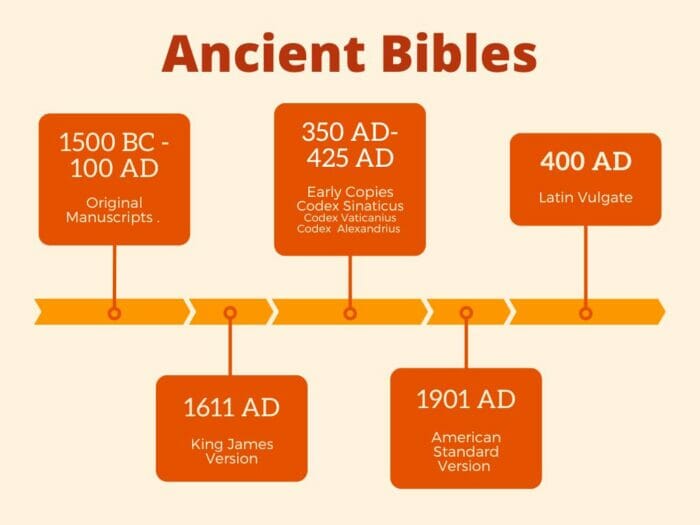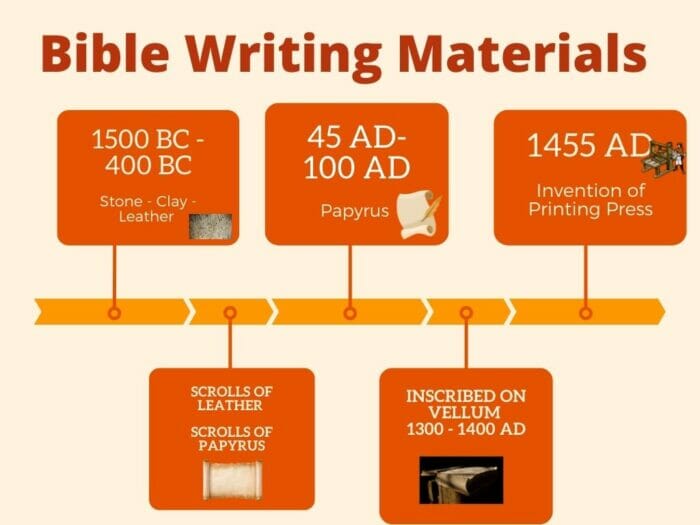What does the Bible say about Interpreting Scripture – There are many different ways to interpret the Bible. Some people read it literally, while others take a more figurative approach.
What does the Bible actually say about interpreting scripture? In this blog post, we will take a look at what the Bible has to say about this topic and explore some of the most common methods of interpretation. Let’s get started!
Table of Contents
What are the Basic Methods used for the Interpretation of Scripture (God’s Word) (Biblical Text)
- Literal
- Allegorical
- Anagogical
- Moral
There are four main methods used for the interpretation of Scripture: literal, allegorical, anagogical, and moral. The literal method takes the Bible at face value, interpreting the text in its plain meaning.
The allegorical method looks for hidden meanings in the text, often spiritual or moral lessons. The anagogical method interprets the text as symbolic of future events, such as the Second Coming of Christ.
The moral method focuses on the ethical teachings of the Bible and how they can be applied to our lives today. Each of these methods has its own strengths and weaknesses, but all can be useful in understanding the Bible.
What does the Bible say about Interpreting Scripture? Interpretation | Interpret
Interpreting Scripture can be a tricky business. After all, the Bible was written over the course of thousands of years by dozens of different authors, in a variety of styles and genres.
As a result, there are often multiple valid interpretations of any given passage. The key is to approach the Bible with humility and an open mind, allowing the Holy Spirit to guide your understanding.
When interpreting Scripture, it is also important to consider the context in which a particular passage was written. What was the author’s intention? How would the original audience have understood the passage? By taking these factors into account, you can ensure that your interpretation of Scripture is faithful to the text and true to its intended meaning.

Interpreting Scripture – from a translator’s view (Holy Scripture)
1. Translation is an art – it’s not simply replacing one word with another
2. There are many different translations of the Bible because no one translation can capture the entirety of the original text
3. Translators must take into account cultural context, historical context, and literary context when translating Scripture
4. The goal of translation is to make the text accessible to as many people as possible
5. Translators often face difficult decisions about how to best translate a particular passage
6. In the end, translators are always guided by their faith in God and their love for Scripture

Interpreting Scripture – from a bible student’s view (God’s Message)
1. Introducing scripture – what it is and where it came from
2. The different types of scripture and how they’re interpreted
3. How to read scripture for yourself, including understanding the context and historical background
4. Applying scripture to your life – what do the verses mean for you today?
5. Resources for further study on interpreting scripture
6. Trusting the Holy Spirit to Teach and Guide you
List of 11 Bible verses that imply Biblical Principals in Translation of Scripture (Paul, Peter, Moses, Joshua)
- 2 Timothy 3:16
- 2 Timothy 2:15
- Romans 1:16
- 2 Peter 1:16
- Mark 16:15
- Hebrews 2:12
- Hebrews 12:1
- Duet 31:26
- Josh 1:8

The Bible is an ancient book, and over the centuries, it has been translated into many different languages. As a result, there are sometimes slight variations in the way different versions of the Bible render certain passages. However, the overall message of the Bible remains the same, regardless of translation. Here are some examples of Bible verses that imply biblical principles in the translation of scripture:
- “All Scripture is God-breathed and is useful for teaching, rebuking, correcting and training in righteousness” (2 Timothy 3:16).
- This verse implies that every word of the Bible is inspired by God and therefore can be trusted to teach us about His character and will for our lives.
- “Do your best to present yourself to God as one approved, a worker who does not need to be ashamed and who correctly handles the word of truth” (2 Timothy 2:15).
- This verse stresses the importance of being well-versed in the Bible so that we can accurately understand and apply its teachings. It also challenges us to study diligently so that we can be approved by God as faithful workers.
- “For I am not ashamed of the gospel, because it is the power of God that brings salvation to everyone who believes” (Romans 1:16).
- This verse tells us that the gospel is powerful enough to save anyone who believes it, regardless of their background or current circumstances. It also teaches us that we should not be ashamed to share our faith with others because the gospel has the ability to change lives.
- “For we did not follow cleverly invented stories when we told you about the coming of our Lord Jesus Christ in power, but we were eyewitnesses of his majesty” (2 Peter 1:16). This verse reminds us that the Bible is not just a collection of stories, but eyewitness accounts of Jesus’ life and ministry.
- “He said to them, “Go into all the world and preach the good news to all creation” (Mark 16:15). This verse commands us to share the good news of the gospel with others.
- “For he says, ‘I will declare your name to my brethren, in the midst of the congregation I will sing your praise'” (Hebrews 2:12). This verse emphasizes the importance of declared meaning and understanding in worship. Therefore, a translation should be easily understood by its audience.
- “Therefore we also, since we are surrounded by so great a cloud of witnesses” (Hebrews 12:1). This verse speaks to the idea that translations should be made in light of how previous generations have interpreted Scripture.
- “And so these words of mine which I have spoken to you shall stand as a witness against you” (Deuteronomy 31:26). This verse suggests that a good translation should be able to withstand scrutiny and hold up over time.
- 12. The Bible is clear that we are to study God’s Word every day. In Joshua 1:8, Moses tells the people of Israel to “Meditate on it day and night, so that you may be careful to do everything written in it. Then you will be prosperous and successful.” This instruction is repeated several times throughout the Old and New Testaments. The apostle Paul tells Timothy, in 2 Timothy 2:15, “Do your best to present yourself to God as one approved, a worker who does not need to be ashamed and who correctly handles the word of truth.” It is clear that Scripture itself places high importance on studying God’s Word regularly.

God’s Word is inspired – Important Principles from Biblical Authors
The Bible is inspired by God. 2 Timothy 3:16 tells us that “all Scripture is inspired by God and is profitable for teaching, for rebuking, for correcting, for training in righteousness.”
This means that the Bible is not just a nice book of stories or advice; it is actually the Word of God. It is living and active, and it has the power to change our lives (Hebrews 4:12). When we read the Bible, we are actually reading the words of God Himself.
This should cause us to approach the Bible with reverence and respect, because we are reading the very words of the Almighty. The Bible is not just a nice book; it is the Word of God. It has the power to change our lives, and we should approach it with reverence and respect.

Bible is made of 66 Different Books – From Original Languages
The Bible consists of 66 books, 39 in the Old Testament and 27 in the New Testament.
The Old Testament books can be divided into four major sections: the Pentateuch (the first five books of Moses), the Historical Books, the Wisdom Literature, and the Prophets.
The New Testament books can be divided into three major sections: the Gospels, the Acts of the Apostles, and the Epistles. Although there is some overlap between these sections, each book has a unique message and purpose.
As you read the Bible, you will encounter stories of love and redemption, wisdom and folly, justice and mercy. Whether you are just beginning your journey of faith or you have been walking with God for many years, the Bible has something to offer you. So dive in and discover all that God has to say to you through His holy Word.
Languages the Old Testament and New Testament were originally Written By the Inspiration of God
The Old Testament was originally written in Hebrew, with a small portion in Aramaic.
The New Testament was originally written in Greek. However, the Old Testament quotes from the Septuagint, a Greek translation of the Old Testament. Additionally, some sections of the Old Testament were probably written in Aramaic, such as Daniel and Ezra.
The New Testament also quotes from the Septuagint. In general, though, the New Testament was most likely written in Greek because that was the lingua franca of that time period.
Also, many people who were literate at that day could read Greek but not Hebrew. Therefore, it made sense for the writers of the New Testament to use Greek.

Who were the Books of the Bible Arranged and Selected By (King James Version, World English Version)
The Bible is a collection of religious texts that are sacred to Christians. The Old Testament contains, among other things, the five books of Moses, which tell the story of the creation of the world and the Exodus from Egypt.
The New Testament includes the Gospels, which tell the story of Jesus Christ, as well as the Epistles, or letters, written by early Christian leaders.
The selection of these texts was made by a group of religious leaders known as the Council of Nicea. In 325 A.D., they met to discuss which texts should be included in the Bible and which should be excluded. Their decisions were based on a number of factors, including whether or not a text was seen as authoritative or inspired by God.
As a result of their deliberations, the Council of Nicea compiled a list of 27 books that would later become known as the New Testament. While this list was not finalized until several centuries later, it remains the basis for the Bible used by Christians today.
How was the Bible Passed on Before the Printing Press
The books of the Bible were written over a period of approximately 1,500 years, from the time of Moses until the end of the first century.
During that time, there was no printing press, and books were copied by hand. The Old Testament was originally written in Hebrew, and later translations were made into Greek and Latin. The New Testament was originally written in Greek.
As the books were copied by hand, there was inevitably some variation in the text from one copy to another. However, the overall message of the Bible remained consistent, and it is this message that has been passed down to us today.
We are extremely fortunate to have such a reliable record of God’s Word, and we should treasure it as a priceless gift from God.
To Carry the Bible into other Countries what needed to be done
When the early Christians began to take the gospel into other countries, they naturally carried their most precious possession with them- their Bibles.
In order to make sure that as many people as possible could read and study the Bible, they needed to find ways to translate it into the language of the people they were trying to reach. This was no small task and required not only a deep understanding of language but also a passion for spreading the word of God.
However, the early translators were up to the challenge, and through their work, millions of people have been able to access the Bible in their own language.
Today, there are still many people who do not have access to a Bible in their own language. But thanks to the tireless work of Bible translators around the world, that number is slowly but surely decreasing.
- Find the meaning of the Text
- Use proper interpretation
- Biblical Hermeneutics
- The True Meaning
- Using principles of Interpretation
- From Bible Scholars
- Determining the correct interpretation
- Examine the context of the passage
- What the passage means
- Trying not to give a private interpretation, not their own ideas
- Trusting in the work of the holy spirit
What Effect Did the Discovery of the Dead Sea Scrolls Have on the understanding of the Bible
In 1947, a Bedouin shepherd stumbled upon a cave in the cliffs near the Dead Sea. Inside, he found a cache of ancient scrolls, which included some of the oldest known copies of the Bible. The discovery of the Dead Sea Scrolls was one of the most important archaeological finds of the 20th century, and it had a profound impact on our understanding of the Bible.
The scrolls provide valuable insights into the history of the Bible. For example, they show that different versions of the Bible were in circulation during the Second Temple period. They also shed light on how the text of the Bible was transmitted from generation to generation. In addition, the scrolls contain numerous references to apocryphal and pseudepigraphical works, which helps to expand our understanding of early Judaism and Christianity.
The Dead Sea Scrolls have also influenced biblical scholarship in a number of other ways. They have helped scholars to reconstruct the lost original text of the Hebrew Bible, and they have cast new light on the interpretation of biblical passages. In short, the discovery of the Dead Sea Scrolls has had a profound impact on our understanding of the Bible.
How Many Languages is the Bible Translated Today
The Bible is the most translated book in the world and is available in over 2,000 languages. While this number may seem impressive, it represents only a fraction of the world’s 6,500 languages. The vast majority of Bible translation work still needs to be done.
There are many reasons why Bible translation is so important. First and foremost, it allows people to read and understand the Word of God in their own language. Second, it helps to spread the gospel message to people who may not otherwise have access to it. And third, it helps to preserve cultures and languages that might otherwise be lost.
Despite the importance of Bible translation, it is a difficult and challenging task. Translators must be fluent in both the source language and the target language, and must have a deep understanding of the culture and context in which the Bible was written. In addition, they must be able to strike a balance between accuracy and readability, ensuring that the meaning of the original text is conveyed clearly while also making the translated text accessible to as many people as possible.
Despite the challenges, Bible translation is a vital part of spreading the gospel message around the world. And with advances in technology, it is now easier than ever before for people to access the Bible in their own language. So whether you’re reading the Bible in English or French or Mandarin, remember that someone somewhere had to put in a lot of hard work to make that possible.
Today the Best Selling Book of All Time is the Bible
The Bible continues to be the best-selling book of all time and its message is as relevant today as it was when it was first written. The Bible is more than a book of religious teachings, it is a book that offers hope, comfort, and guidance to all who read it.
The Bible has something for everyone, no matter what their circumstances or situation. It is a book that can be read over and over again and always offer something new.
Whether you are looking for answers to life’s big questions or simply need some encouragement, the Bible is a book that can offer you support and comfort. So why not give it a try? You may be surprised at what you find.
Final Thoughts – What Does the Bible say about Interpreting Scripture
- Scripture Originated from the Mouth of God
- Scripture is our Means to Salvation
- God Guided his words down through time
- We can trust The Bible for our Guide through this Life
God Bless Greg


